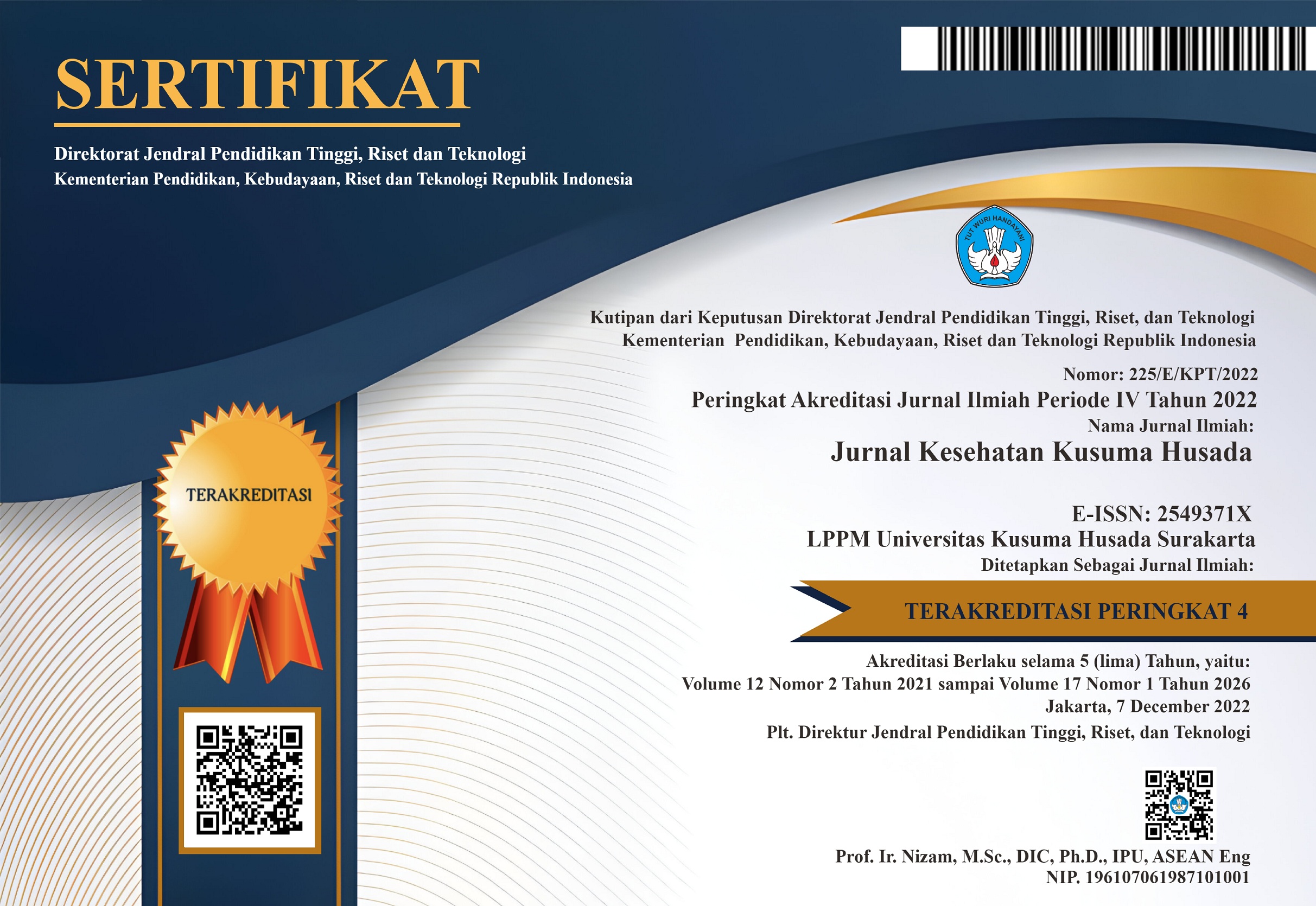IDENTIFIKASI PROFIL FITOKIMIA DAUN TORBANGUN (Coleus amboinicus) UNTUK MENINGKATKAN PRODUKSI ASI
DOI:
https://doi.org/10.34035/jk.v13i2.838Keywords:
ASI, fitokimia, torbangun, breast milk, coleus amboinicus, phytochemicalAbstract
Coleus amboinicus merupakan tumbuhan yang memiliki metabolit sekunder yaitu saponin, alkaloid, flavonoid, polifenol dan minyak atsiri. Senyawa yang sangat berpengaruh terhadap peningkatan produksi ASI termasuk dalam polifenol. Beberapa bentuk pemanfaatan daun torbangun banyak digunakan untuk meningkatkan produksi ASI dalam bentuk tablet dan teh. Perlunya inovasi baru untuk lebih meningkatkan daya konsumsi adalah dengan membuat simplisia daun torbangun dalam bentuk effervescent. Perlu dilakukan penelitian untuk mengetahui kandungan metabolit sekunder daun torbangun. Penelitian ini bertujuan untuk mengetahui kandungan metabolit sekunder daun torbangun melalui uji fitokimia. Penelitian eksperimental dengan metode kualitatif untuk mengetahui kandungan fitokimia pada daun torbangun dilakukan di laboratorium farmasi. Dimulai dengan ekstraksi dan dilanjutkan dengan pengujian. Identifikasi profil fitokimia dapat dilihat dari perubahan warna dan karakteristik ekstraksi daun torbangun dengan menambahkan beberapa bahan kimia yang berfungsi untuk mengikat fitokimia. Karakteristik organoleptic bentuk serbuk kering, warna hijau kehitaman, bau langu, rasa pahit. Fitokimia yg teridentifikasi antara lain alkaloid, flavonoid, saponin, terpenoid dan steroid, serta tannin. Hasil pengembangan KLT akan dideteksi di bawah sinar tampak, UV 254, dan UV 366 untuk melihat pola kandungan senyawanya.
Coleus amboinicus is a plant that has secondary metabolites, namely saponins, alkaloids, flavonoids, polyphenols and essential oils. Compounds that are very influential on increasing breast milk production include polyphenols. Several forms of utilization of torbangun leaves are widely used to increase breast milk production in the form of tablets and tea. The need for new innovations to further increase consumption power is to make torbangun leaf simplicia in the form of effervescent. Research needs to be done to determine the content of secondary metabolites of torbangun leaves. This study aims to determine the content of secondary metabolites of torbangun leaves through phytochemical tests. Experimental research using qualitative methods to determine the phytochemical content of torbangun leaves was carried out in a pharmaceutical laboratory. Starting with extraction and continued with testing. Identification of the phytochemical profile can be seen from the color changes and the extraction characteristics of torbangun leaves by adding several chemicals that function to bind phytochemicals. Organoleptic characteristics of dry powder form, blackish green color, unpleasant odor, bitter taste. The identified phytochemicals include alkaloids, flavonoids, saponins, terpenoids and steroids, and tannins. The results of the TLC development will be detected under visible light, UV 254, and UV 366 to see the pattern of the compound content.
Downloads
Published
Issue
Section
License
The copyright of the published articles belongs to Jurnal Kesehatan Kusuma Husada.

This work is licensed under a Creative Commons Attribution 4.0 International License.
















